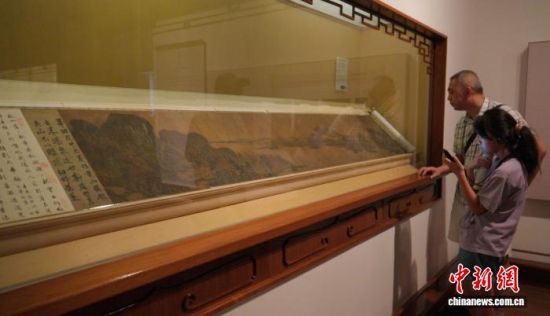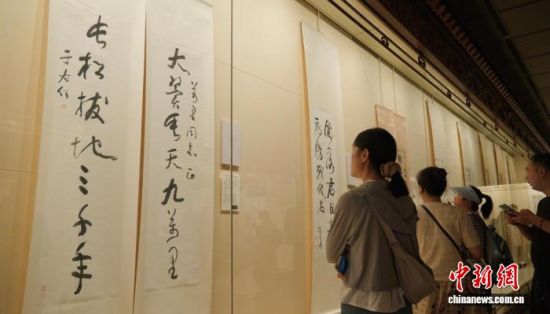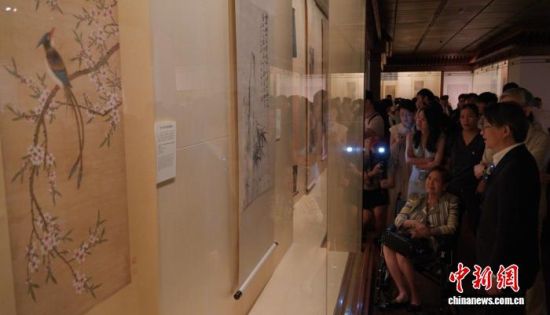«Pearls Return to the Sea: The Zhuang Wanli Family Donation of the Liang Tu Xuan Painting and Calligraphy Exhibition» is now open to the public at the Shanghai Museum People’s Square venue, paying tribute to the Zhuang family’s sincere dedication and generous contribution to preserving Chinese culture.
Among the Shanghai Museum’s collection of paintings and calligraphy, the «Liang Tu Xuan» treasures donated by the family of Filipino-Chinese entrepreneur Zhuang Wanli (1899–1965) are particularly precious. This marks the first time a foreign national of Chinese descent donated such a significant number of cultural relics to a Chinese national-level museum.
«Liang Tu Xuan» was originally the study of Zhuang Wanli, known as the «scholar-merchant of his generation» in the Philippines, located in the suburbs of Manila. Deeply admiring Chinese culture and concerned about the dispersal of cultural relics overseas, Zhuang devoted his life to collecting precious paintings and calligraphy, which he stored here.
After Zhuang Wanli passed away, his children honored their father’s wishes. With family consensus, they invited experts to the Philippines for detailed appraisal and selected 233 exceptional pieces. These were generously donated to the Shanghai Museum in 2000, allowing the «Liang Tu Xuan» collection to «return to the sea.» For this act, the Zhuang siblings were awarded the «Magnolia Honor Award» by the Shanghai Municipal Government.

«The return of these artworks was not easy. The Zhuang family visited mainland China multiple times to find a home for them,» recalled the director of the Shanghai Museum’s Painting and Calligraphy Research Department. After the «Liang Tu Xuan» collection was acquired, the museum held a related exhibition of selected works in 2002 and unveiled a dedicated «Liang Tu Xuan» room in December of the same year. «Now, the renovated and upgraded ‘Liang Tu Xuan’ room offers more exhibition space, and many pieces in this exhibition are being displayed for the first time.»
The «Liang Tu Xuan» collection is extensive, with works spanning over 800 years from the Song to the Ming, Qing, and modern periods. The collection is comprehensive, covering figure paintings, landscapes, flower-and-bird paintings, and calligraphy. Many pieces hold significant artistic, cultural, and historical value.
Among the exhibits, the anonymous Song Dynasty work «Autumn Mountains and Temple Scroll» is the earliest in the collection. It depicts a autumn mountain temple with sparse vegetation, featuring broad composition and solid brushwork reminiscent of Fan Kuan, one of the «Three Great Masters of the Northern Song,» while the light ink washes also reflect Southern Song elegance. This scroll enriches the museum’s historical painting and calligraphy collection.

Among the considerable number of calligraphy works, Ming Dynasty artist Dong Qichang’s «Nine Letters Scroll in Running Script» is considered a masterpiece. The nine letters discuss interactions with literary companions and monk friends, concerns about court politics, and personal grievances, providing valuable historical insight into Dong Qichang’s life and thoughts.
Zhuang Wanli’s daughter shared, «Most of these ‘Liang Tu Xuan’ paintings and calligraphies were acquired by my father in Japan during the 1950s and 1960s. I was by his side then, and he said that no matter the cost, these pieces must be recovered and eventually returned to China. Later, when he suffered a sudden heart attack, he wept continuously—I knew he was worried about these artworks. So I preserved them carefully on his behalf and ultimately donated them to the Shanghai Museum.»
To fully display and study these treasures, the Shanghai Museum has implemented a rotating exhibition system. This initial exhibition features 41 pieces. The museum director stated, «Sharing these donated artistic treasures with the public is both the wish of the Zhuang family and an honor for the Shanghai Museum.»


